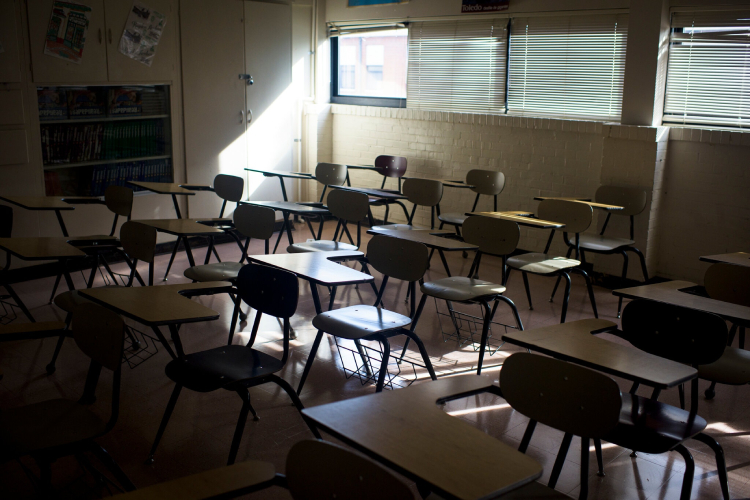
An empty classroom, which represents the changes that have been made. photo by Nakya Castille
Junior year has its ups and downs, but luckily, many juniors have shared words of encouragement to lift one another up.
The class of 2022 closed their eyes one random night in March of 2020, believing that the world would remain the same when they woke up, only to be reminded of how unpredictable life is as sophomore year ended and they were tossed into a new chapter of their lives: junior year of high school. For some, junior year brings the relief of knowing that the finish line is close; yet for others, junior year is filled with daunting obstacles that can obstruct the path to graduation. Everything has changed: the school building became a house, a classroom became a bedroom, a textbook became a PDF, classmates became names on a screen, and pencils became keypads. Despite living in a pandemic, attending online school, and facing the hardest year in high school, the class of 2022 has demonstrated resilience, time and time again, as they work hard to better themselves academically and personally to become the leaders of tomorrow.
Coral Mendoza described junior year as “the most important year in high school [and] the perfect time to think about [or] be sure [about] what you want to do once you graduate. It is a year to mature and get everything started before you get to senior year.” She could not have said it any better. Junior year is typically the time to get serious about academics and think about life after high school. During this year, students are encouraged to take challenging classes because it is their last full year of grades; thus, it will be what colleges use to assess how well they handle the difficult levels of work. It is also a time for students to look to the future and discover more about themselves by connecting with others, trying new things, and taking the first steps to be who they want to be. More than ever, it is important for students to build their resumes through different activities that they actually enjoy. These are a series of formidable tasks; nevertheless, they are crucial to finding success in life after high school.
One obstacle that a junior has to overcome is the Scholastic Aptitude Test (SAT). The SAT is a standardized test administered by the College Board. As the test date approaches, stress runs high as students study different materials utilizing different techniques. As far as preparation, many students expressed that they were using Khan Academy, studying from textbooks, attending classes, and/or taking College Board SAT tests. Darrah Boyle, a junior at TJ, uses her own version of the Pomodoro technique—a time-management method—to stay productive and focused. Despite knowing that colleges use SAT scores to assess a student’s readiness for college-level work, McKenzie Nguyen, a junior at Highlands Ranch High school, raised a question that lingers on the minds of many, “What was the reason?”
Motivation allows a student to build habits that influence the choices they make in life. Kendra Cherry, an author and educator, defines motivation as “the process that initiates, guides, and maintains goal-oriented behaviors.” Standardized testing requires motivation, as it allows students to learn more deeply, but this also extends to other areas in life, as motivation allows students to meet their personal and academic goals. Boyle shared a piece of advice to all students, urging them to “stay motivated even if it’s difficult” and to “prioritize school [by keeping] yourself motivated through this.” There are a number of ways students can stay motivated. They can set goals, pursue classes that interest them, and limit distractions. One of the most critical concepts in staying motivated is recognizing a person’s limitations so that people can overcome them, yet still prioritizing their mental health. A common way of relieving stress for many students is participation in sports and physical activities. Physical activity reduces stress hormones while stimulating the production of endorphins, which trigger a positive feeling in the body. Mendoza elaborated on this, expressing how “exercising takes [her] mind off of things, and instead [her] brain focuses on the exercise being done” and “[she has] been looking forward to tennis [which] brings [her] joy, so it is sort of a motivation kind of thing.” This actively demonstrates that exercise is a healthy outlet; it can even be motivating.
With every year there are new changes, now more than ever, but with changes, one must adapt and overcome to embrace life and find joy in the little things. The class of 2022 has shown remarkable progress as they work hard in their academics and personal lives to tackle the SAT and move forward in their journey.